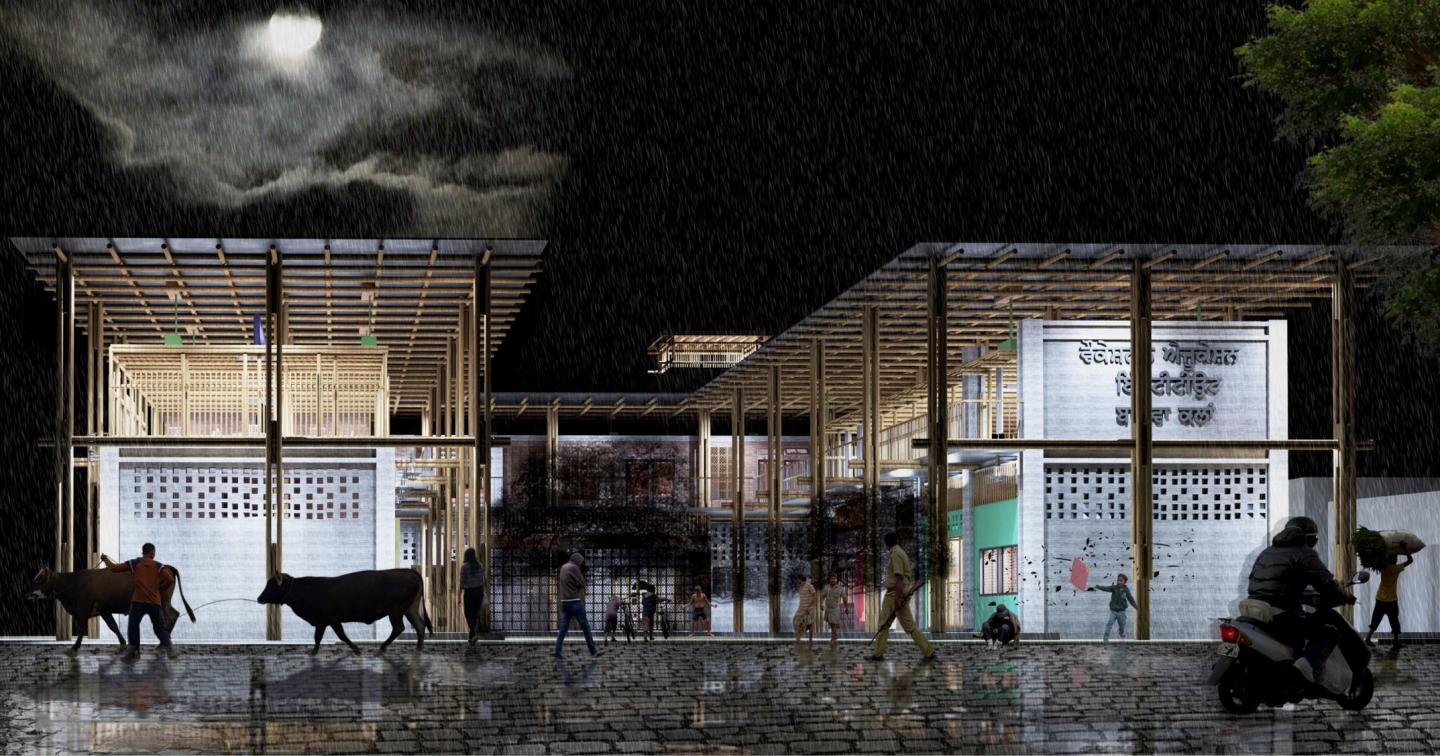RESEARCH QUESTION:
How can architectural and infrastructural interventions in a rural village in the state of Punjab, India, be designed to assist economic growth, environmental sustainability and utilise local skills and materials?
This research project is an investigation into how architectural design can assist low-income rural communities in the Punjab region of India. Specifically, the project focuses on rebuilding villages using low-impact technologies and self-build methods. A case study of a rural village is used as an example to demonstrate how architectural interventions can be used to create new buildings and infrastructure. This will foster education, commerce and housing in response to growth in de-urbanisation in India.
Rural communities in India have depopulated and become deprived due to rural-to-urban migration for over half a century. Buildings have fallen into disrepair with little or no investment in infrastructure. That, however, is now changing as many urban migrants are returning to their home communities. Government funding has recently supported this and there is significant evidence of reverse migration in recent times.
The increased population in rural communities results in a need for improved educational buildings, housing, small businesses, traditional commerce, and farming. However, migrants have little capital to fund construction and government support is not adequate. One feasible method for rebuilding these communities is implementing self-build methods while using locally-produced materials.
This document outlines the trends in migration, identifying the demands for redevelopment of rural villages. A typical village was selected, surveyed and investigated concerning future needs. A desktop analysis was carried out into self-build techniques, materials appropriate for this area and the local skills for construction.
Based on the future needs of the village population and the possible construction methods, several significant buildings have been designed including a school, a training centre, low cost housing, street-side retail outlets, a sizeable chilled storage facility and a small business centre based around aquaculture.
The architecture is defined in relation to the skills of the villagers, the climate, the available materials and technologies, the cultural desires of the population. It is not an attempt at a style driven form of architecture. Although, the designs are designed by me and are almost entirely resolved. The intention of the project is to be community-driven, focussed. If such a project were to happen then the design process would be shared with the community, and the construction methods would be continually evolving from the first-hand experience of the processes of the building.
2018
0000
Jagdip Bajwa


























